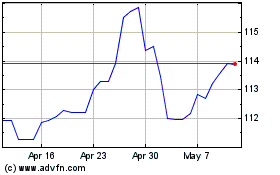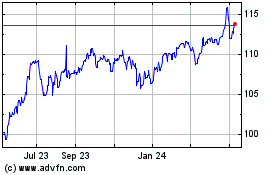Canadian Dollar Weakens Amid Risk Aversion, Falling Oil Prices
July 06 2017 - 10:53PM
RTTF2
The Canadian dollar declined against its most major rivals in
the Asian session on Friday, with rising global bond yields amid
indications of a hawkish shift by the European Central Bank sapping
investor appetite for riskier assets.
The minutes from the European Central Bank's June meeting showed
that policymakers considered dropping their pledge to expand or
extend the bond-buying program. This came on the heels of a speech
by the ECB chief Mario Draghi last week, when he sounded optimistic
on future inflationary movements.
Yesterday's weaker-than-expected ADP private payrolls data
suggested a possible slowdown in labor market activity ahead of
non-farm payrolls due 8:30 a.m. ET Friday.
U.S. private sector employers added 158,000 jobs last month,
lower than the 230,000 positions created in May and below
expectations for a gain of 185,000, according to the report from
payroll processor ADP.
The escalating tensions surrounding North Korea's test launch
this week of an intercontinental ballistic missile also continues
to be a point of concern. U.S. President Donald Trump on Thursday
said in Warsaw that he's considering some pretty severe things in
response to North Korea's efforts to develop nuclear weapons aimed
at the U.S.
The loonie was also undermined by falling oil prices, as a data
from the Energy Information Administration showed that U.S. oil
production rose to 9.34 million barrels per day last week.
Crude for August delivery fell $0.55 to $44.97 per barrel.
The loonie was lower against its major rivals, except the aussie
on Friday.
The loonie dropped to 1.4835 against the euro, its lowest since
June 30. Continuation of the loonie's downtrend may see it
challenging support around the 1.50 region.
Data from Destatis showed that German industrial production grew
at the fastest pace in four months in May.
Industrial production grew 1.2 percent month-on-month in May,
faster than the 0.4 percent increase seen in April and exceeded
economists' forecast of 0.2 percent.
The loonie edged down to 0.9864 against the aussie, compared to
Thursday's closing value of 0.9843. If the loonie's downtrend, 1.00
is likely seen as its next support level.
The loonie weakened to a 2-day low of 1.2994 against the
greenback and held steady thereafter. The next possible support for
the loonie is seen around the 1.31 area.
On the flip side, the loonie rose to 87.67 against the yen, off
its early low of 87.13. The loonie is seen finding resistance
around the 89.00 level.
Preliminary data from the Cabinet Office showed that Japan's
leading index strengthened in May, while coincident index fell from
April.
The leading index that measures the future economic activity,
rose to 104.7 in May from 104.2 in April. The score was forecast to
rise to 104.6.
Looking ahead, U.K. industrial production and trade data for May
are set for release in the European session.
In the New York session, U.S. and Canada jobs data as well as
Ivey PMI - all for June will be out.
CAD vs Yen (FX:CADJPY)
Forex Chart
From Mar 2024 to Apr 2024

CAD vs Yen (FX:CADJPY)
Forex Chart
From Apr 2023 to Apr 2024
